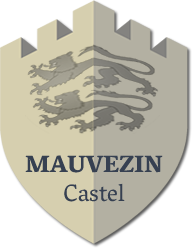John I, Count of Foix
John I, Count of Foix, also known as Jean de Foix-Grailly, was born in 1382. He was the son of Archambaud de Grailly, captal of Buch (a country composed of Arcachon, La Teste and Gujan Mestras), and Isabelle de Foix-Grailly. She was the sister of Matthew of Castelbon, Gaston Febus’s heir, who died with no descendants. The Treaty of Tarbes, signed on May 10, 1399, bequeathed ownership of the County of Foix to his parents and forced his father to leave the English alliance. As collateral for the treaty, he was sent as a hostage to the Court of France where he paid his respects to Charles VI. That is when he took for himself the flattering motto “j’ay belle dame” (I have fair lady).
While his father was performing a balancing act between the King of France and the King of England in order to keep his lands, which were directly exposed to the conflict, John took part in the siege of Bordeaux in 1405, the siege of Blaye in 1406, and the siege of Bourg in 1407. In November 1411, his father Archambault de Grailly died, and his mother transferred all her possessions to him. Charles VI gave him rule over Languedoc.
After the disaster in Azincourt, he joined the Dauphin who confirmed his appointment as General Steward of Languedoc. In that position, he only kept his own interests in sight and abused his power so much that the Dauphin revoked his appointment in 1420. He then joined forces with the English who gave him back his position, before joining the King of France in 1423 when Henry V of England died. He was still Steward of the King in Languedoc.
He took part in the 1423 campaign but carefully avoided any fighting and preferred to buy his enemies’ surrender. Rich and powerful, feared from the King of France, he seized Bigorre in 1425. From then on, he acted as a true “king” in the South and adopted independent policies relevant to his own interests. He didn’t hesitate to negotiate a treaty with the King of England in order to keep his lands safe from all fighting.
He had some works done in the Mauvezin Castle, presumably in order to turn it into a county residence, but never saw them to completion.
He died in Mazères on May 4, 1436 and was buried in the Boulbonne Abbey, the burial site of all Counts of Foix.






.png)